Antennas are probably the most important component in your FPV system, this guide will tell you about all the types of antennas that are used for FPV, and when its the best situation to use them. If you dont feel like reading you should check out the video on antenna fundamentals which illustrates the differences between linear and circular antennas including directional and omnidirectional antennas.
In this guide you will know the fundamentals of circular and linear polarization, and the difference between directional and omnidirectional antennas.
Antenna Frequency
FPV antennas are tuned to specific frequencies so you cant use a 2.4Ghz antenna with 5.8Ghz FPV equipment. In general the lower frequency antennas are bigger than the higher frequency ones. 95% of the time we use 5.8Ghz for FPV video so in the rest of this article we will assume all the antenna are 5.8Ghz. To learn more about frequencies have a look at our FPV transmitter guide
But before we get into the types of antennas its important to first understand the two types of antenna polarization.
Antenna Polarization - Linear or Circular 
The first concept that you should understand is antenna polarization. There are two main categories of antennas, linear and circular polarized antennas.
The image above might look rather confusion at first, but the radiation pattern for linear (left) and circular polarized (right)antennas are shown. The main thing to take note of in this image is the red plane on each diagram. With linear polarized antennas the signal is formed on a single plane (red plane in image). With circular polarized antennas is components are combined to form a signal on a circular plane corkscrew (red cylinder in the image). The blue and green waves are the horizontal and vertical components of the signal that make up the combined signal in red.
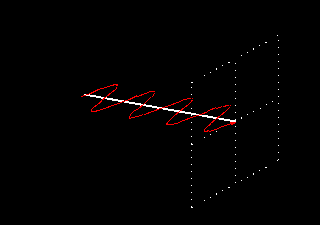
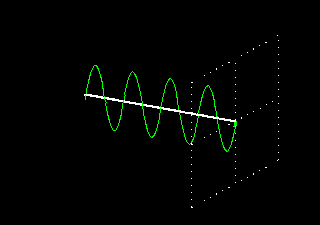
Above: linear antenna polarization
In general linear polarization can provide extra range as all the energy is focused on a single plane rather that being dispersed into a cylindrical pattern. However in order to get good reception with linear polarized antennas you need to ensure that both antennas are aligned to ensure the radiation pattern has maximum overlap. Wireless systems such as Wifi will typically use linear antennas since the devices are stationary on the ground so its easy to ensure the antennas are always aligned. When using linear antennas on board your FPV drone in the sky means that when you are turning you will get less overlap, resulting in your FPV signal breaking down. The most extreme case as shown below is when the transmitter and receiver antenna are 90 degrees to one another, resulting in the least amount of signal overlap
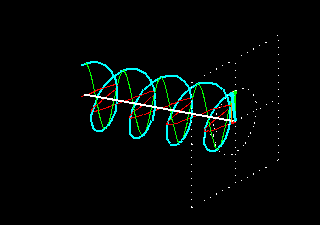
Above: Circular antenna polarization
For this reason 99% of FPV drone pilots actually get better reception when using circular polarized (CP) FPV antennas. The fundamental advantage of circular polarized antennas is due to the corkscrew pattern you always get good overlap no matter what angle you are flying at, which is fairly important for aircraft. Another advantage of circular polarized antennas is their ability to reject multi-path signals.
LHCP and RHCP
When we talk about circular polarized antennas, we get left hand circular polarized (LHCP), and right hand circular polarized (RHCP) antennas. This simply reffers to the direction of corkscrew signal that emits from the antenna. LHCP is not compatible with RHCP, so if using circular polarized antennas you need to make sure that both the transmitter and receiver both have either RHCP or LHCP antennas.
When to use Circular Polarization
- For most drone applications its best to use circular polarized antennas
- When you are performing acrobatic flying, or will not be staying exactly level for long duration of your flight.
When to use Linear Polarized antennas
- Dont have enough space to mount a circular polarized antenna
- When your aircraft is going to be very stable (such as a slow flying photography quadcopter) and you want to get more range. I.e. if your antennas on the ground and aircraft will be aligned most of the time
Directional and Omnidirectional Antennas
Another classification of antennas is the directional polarization. Directional and omni directional can apply to both linear and circular antennas, so you can have one directional antenna that is linearly polarized, but you can also get a circularly polarized direction antenna.
The water balloon analogy ![]()
The energy of your FPV system can be considered to behave like a water balloon. By using different antennas you essentially alter the shape of the balloon, but the total amount of water remains fixed. To get more range we can stretch the water balloon out to make it longer at the cost of reducing its width or coverage (making the balloon thinner). This is what long range antennas do by sacrificing beam width to get more range. Alternatively we can squash the waterballon, which will make it fat, but shorter, this means we can get more coverage at the cost of reduced range.
Directional antennas are able to get more range as they essentially stretch the water balloon, increasing range but reducing coverage. Directional antennas are able to focus into a long but narrow beam. Omnidirectional antennas on the other-hand are when you squash the balloon, increasing its coverage while reducing range. These antennas have very wide beams, that are not very long.
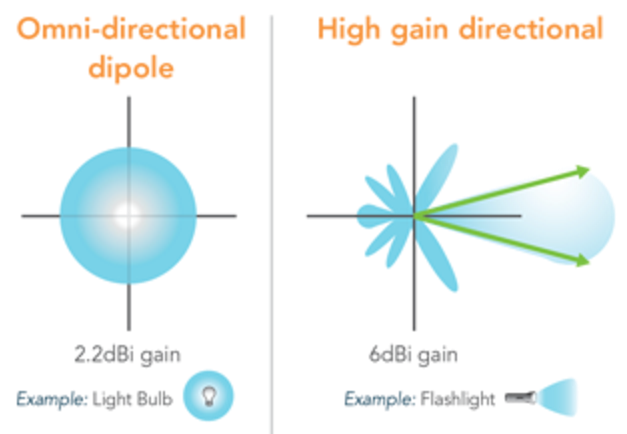
Omnidirectional antennas are great for everyday FPV flying as they provide great coverage and you dont need to keep them pointed at your aircraft to ensure you get signal. Directional antennas (aka high gain antennas) allow you to fly further away and still receive a good FPV signal, but because the beam is narrow you always need to ensure it is pointing at your drone. You can do this by getting your friend to point at your FPV aircraft as you fly around, our invest in an antenna tracking station that will automatically pan and tilt to keep your antenna pointing at your drone.
Using multiple antennas
In order to get the best of both wolds, some FPV systems combine two (or more) antennas on the ground receiver. This could include one omnidirectional antenna to give you good coverage. And the second antenna could be a high gain directional antenna to give you extra range in a specific direction. These systems make use of dual receiver systems (called diversity receivers) which will monitor the signal from both antennas and switch to the one that gets the best reception.
What antennas should I use for FPV?
I would say the best antenna to start with would be a cloverleaf antenna on your receiver and a skew planar antenna on your video transmitter. Some FPV kits already include these antennas, but if not most shops sell them as a pair of FPV antennas. These are omnirectional, circular polarized antennas which work relay well for FPV.
Generally price gives a good indication on the quality and precision of the antenna. When comparing the same type of antenna from different manufactures, the more expensive one will usually have better range. This is because they are made using better materials, and with more precision. However that is not always the case and its up to you if you think its worth to pay double to get a 10% increase in range.
As you become more familiar with FPV flying and you desire more range you can upgrade to more directional systems such as a helical antenna.
Types of Antennas
Duck - Linear, Omnidirectional
Skew Planar - Circular, Omnidirectional (4 lobe)
Cloverleaf - Circular, Omnidirectional (3 lobe)
Array - Circular, Omnidirectional
Helical - Circular, Directional
Patch - can be both Circluar or Linear, Directional
Crosshair - Circular, Directional
Yagi - Linear, Directional
So that covers some of the most common antennas used for FPV flying. Hopefully this guide will help you make the best decision in what type of antenna you decide to use.
What is Gain?
The gain of an antenna is simply the measure of power of an antenna or video transmitter, measured in decibels, the formal definition is:
“The decibel (dB) is a logarithmic unit of measurement that expresses the magnitude of a physical quantity (usually power or intensity) relative to a specified or implied reference level.
Antennas that you can buy will usually have a dB specification. This value gives you an idea of how the antenna will alter the radiation pattern. A perfectly isotropic antenna with 0 dB gain will have a radiation pattern thats a perfect circle from the antenna. As you increase gain you will alter the shape of this circle pattern to squash or squese it to get extra range in a particular axis.
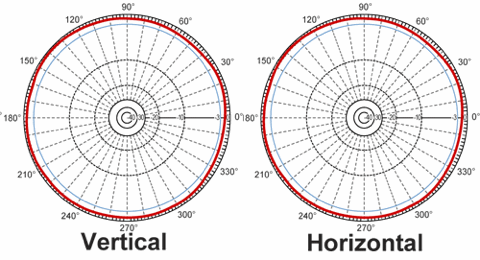
However in real life that is usually not possible so antennas such as duck antennas which have a gain of about 3dB will squad the pattern down abit to gain extra horizontal range
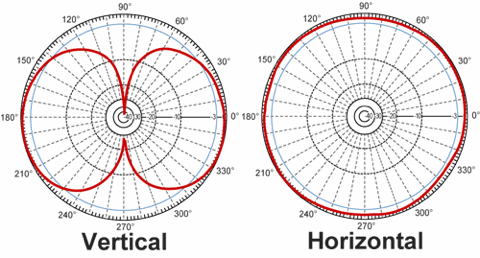
As we increase gain even more with directional antennas not only is the pattern squashed more verticaly, but also stretched in a particular direction horizontally to get more range in that direction…
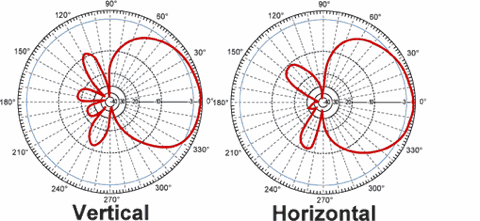
So by increasing gain, the antenna (directional antenna) essentially stretches the radiation pattern out to form further in a specific direction to get extra range. Typically onboard your aircraft you will always use an omni directional antenna since its always rotating but you can use a directional antenna on the ground that will need to always point at your aircraft to get extra range. Some of the larger military drones also use directional antennas onboard the aircraft mounted onto a pan-tilt module which will make them face the ground station (or satellite) to get extreme range.
As usual if you have any questions or something is not clear or is missing just let me know and I will be happy to try help.
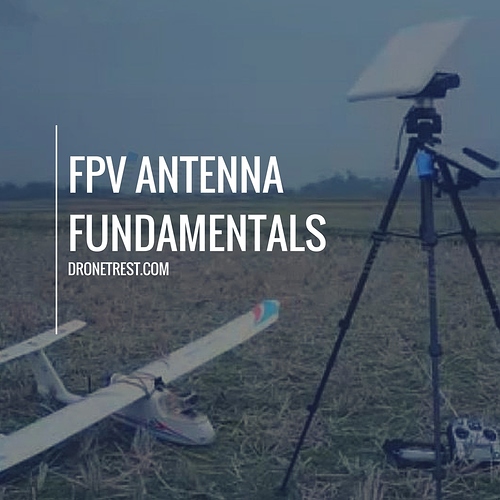
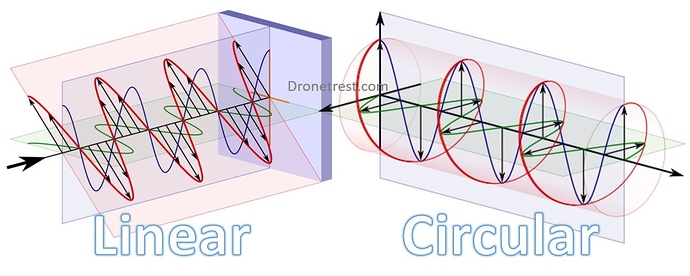

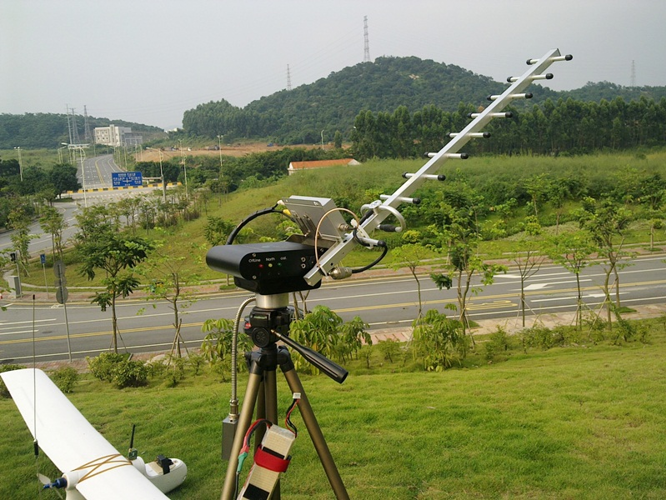
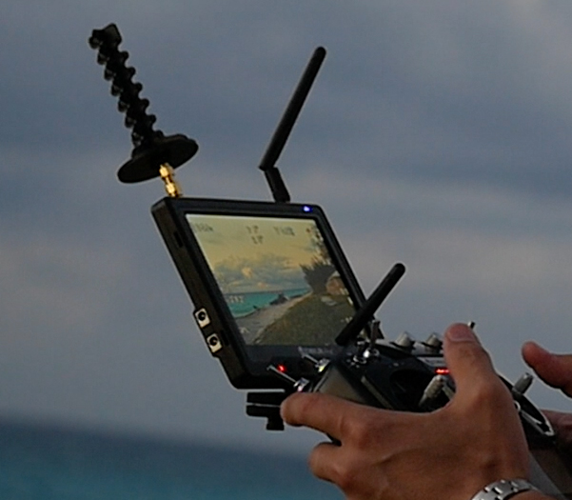
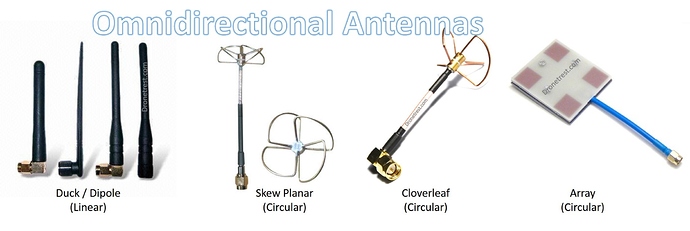
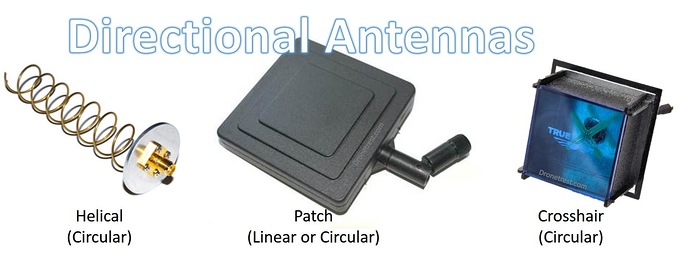


 )
)